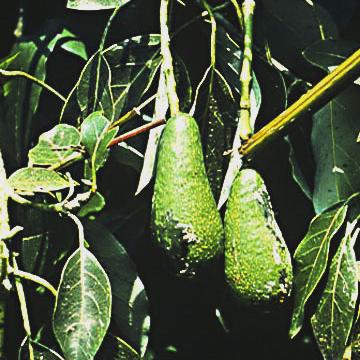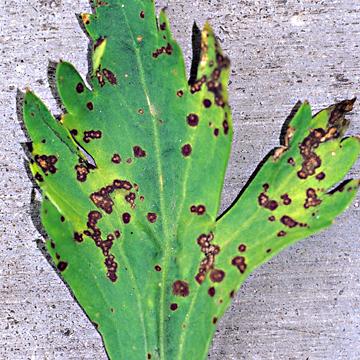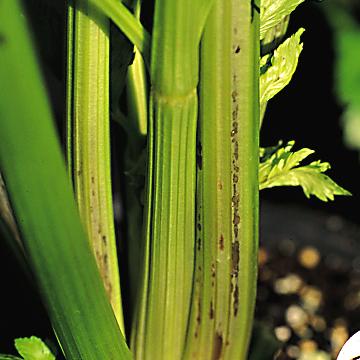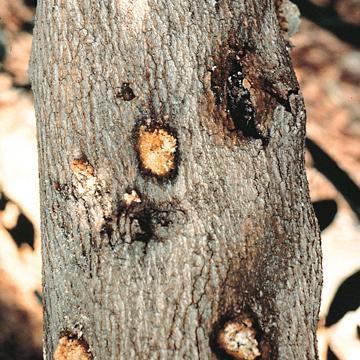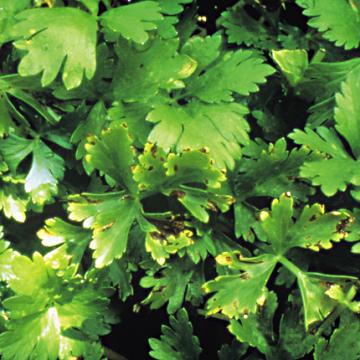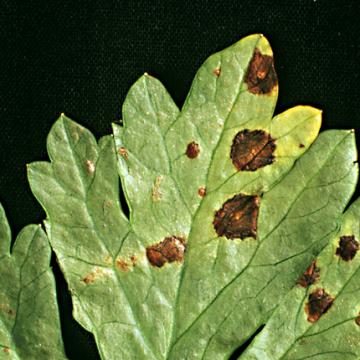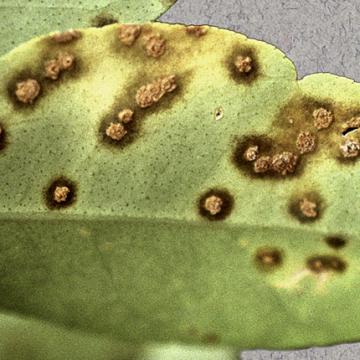DISEASE: Bacterial blast and black pit
HOST: Citrus (Lemon)
The term "black pit" refers to black lesions on fruit, which may be specks or large, sunken pits as seen here. They also may be light tan, later becoming reddish brown to black.
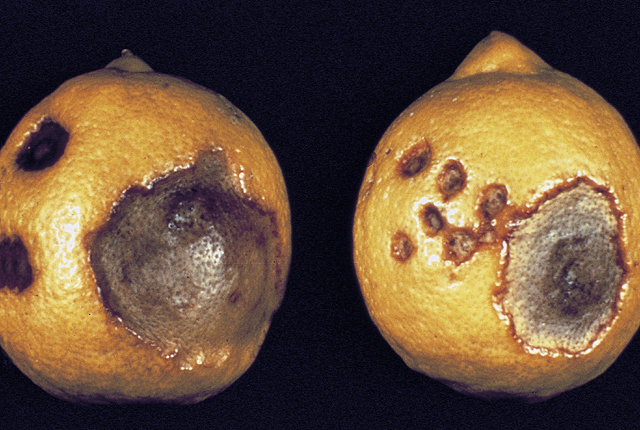
Bacterial blast and black pit | Citrus (Lemon)
DISEASE: Bacterial blast and black pit
HOST: Citrus (Lemon) (Citrus limon)
PATHOGEN: Pseudomonas syringae pv. syringae
SOURCE: J. Menge
DISEASE: Bacterial blast and fruit spot
HOST: Avocado
White bacterial ooze on surface of fruit. Pseudomonas strains that cause canker likely differ from those that infect fruit and leaves.
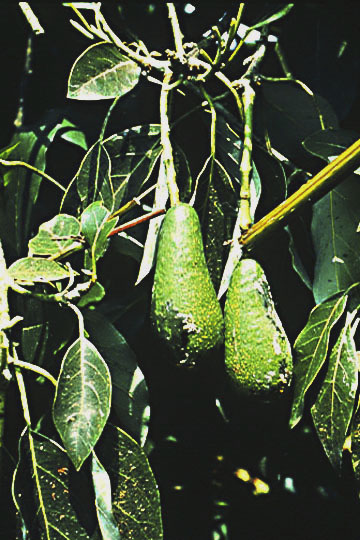
Bacterial blast and fruit spot | Avocado
DISEASE: Bacterial blast and fruit spot
HOST: Avocado (Persea americana)
PATHOGEN: Pseudomonas syringae
SOURCE: L. Fucikovsky
DISEASE: Bacterial blight (Brown stem)
HOST: Celery
Lesions are necrotic and circular to angular. Some have yellowish halos. Older lesions become brown and dry.
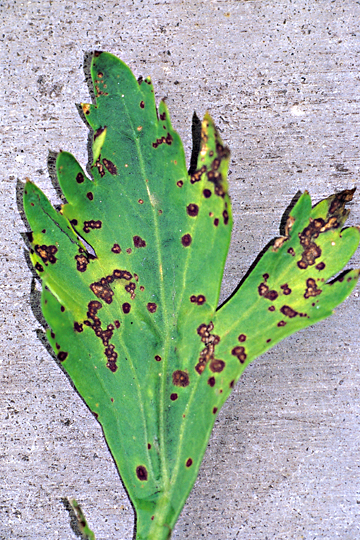
Bacterial blight (Brown stem) | Celery
DISEASE: Bacterial blight (Brown stem)
HOST: Celery (Apium graveolens)
PATHOGEN: Pseudomonas cichorii
SOURCE: R. Raid
DISEASE: Bacterial blight (Brown stem)
HOST: Celery
Ooze from lesion on celery leaf.
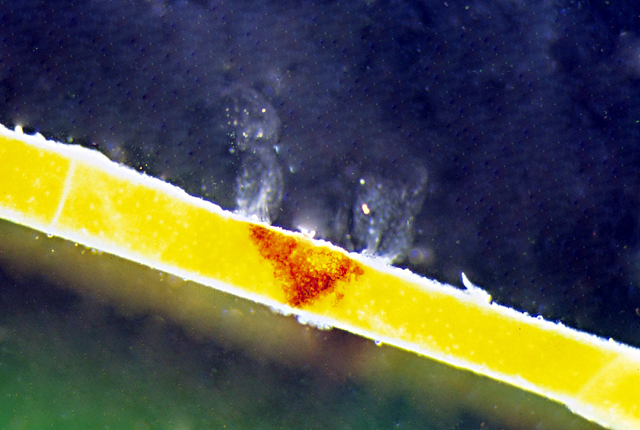
Bacterial blight (Brown stem) | Celery
DISEASE: Bacterial blight (Brown stem)
HOST: Celery (Apium graveolens)
PATHOGEN: Pseudomonas cichorii
SOURCE: R. Raid
DISEASE: Bacterial blight (Brown stem)
HOST: Celery
Characteristic brown discoloration of petioles, which is more evident on inside of petiole close to the crown. Parenchyma tissues are firm and brown.
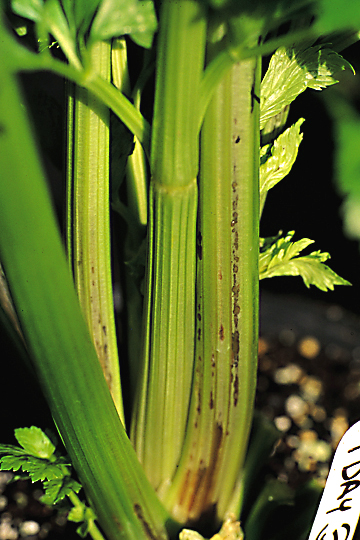
Bacterial blight (Brown stem) | Celery
DISEASE: Bacterial blight (Brown stem)
HOST: Celery (Apium graveolens)
PATHOGEN: Pseudomonas cichorii
SOURCE: K. Pernezny
DISEASE: Bacterial canker
HOST: Avocado
Cankers on trunk.
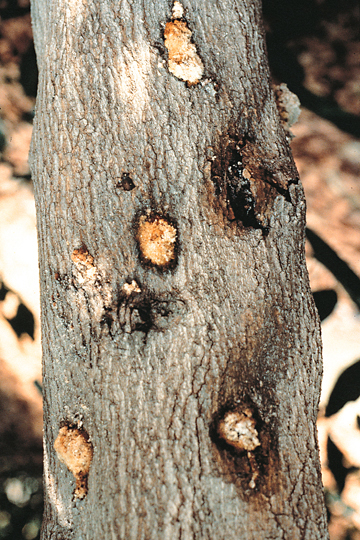
Bacterial canker | Avocado
DISEASE: Bacterial canker
HOST: Avocado (Persea americana)
PATHOGEN: Xanthomonas campestris
SOURCE: H. Ohr
DISEASE: Bacterial leaf spot
HOST: Celery
Leaves with typical symptoms of rusty brown lesions with greasy appearance.
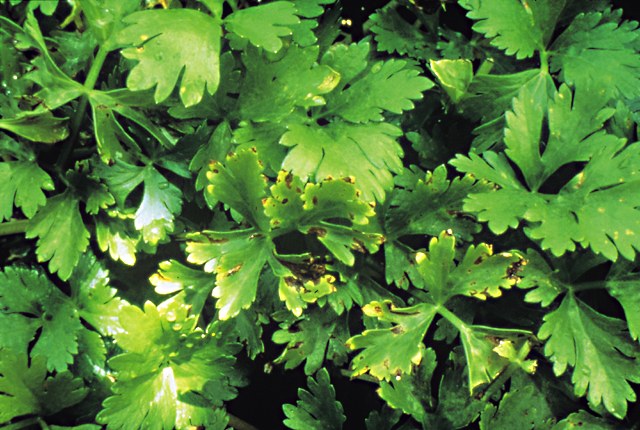
Bacterial leaf spot | Celery
DISEASE: Bacterial leaf spot
HOST: Celery (Apium graveolens)
PATHOGEN: Pseudomonas syringae pv. apii
SOURCE: R. Gilbertson
DISEASE: Bacterial leaf spot
HOST: Celery
Celery leaves with rusty brown lesions and some yellowing at leaf tips.
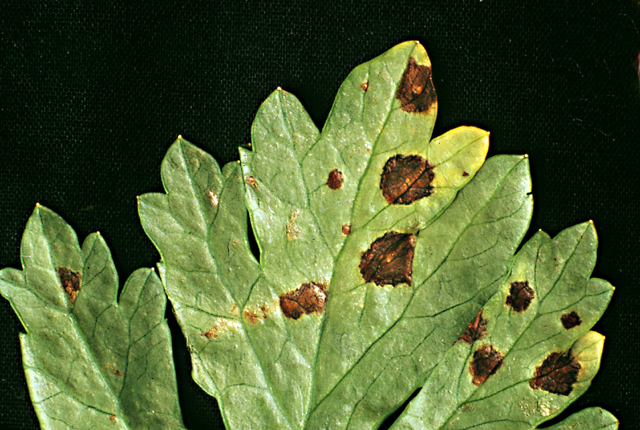
Bacterial leaf spot | Celery
DISEASE: Bacterial leaf spot
HOST: Celery (Apium graveolens)
PATHOGEN: Pseudomonas syringae pv. apii
SOURCE: S. Koike
DISEASE: Citrus canker
HOST: Citrus (Lemon)
Lower leaf with raised, corkylike lesions surrounded by dark brown halos, one of the diagnostic symptoms of citrus canker.

Citrus canker | Citrus (Lemon)
DISEASE: Citrus canker
HOST: Citrus (Lemon) (Citrus limon)
PATHOGEN: Xanthomonas citri subsp. citri
PATHOGEN SYNONYM: Xanthomonas citri
SOURCE: T. Gottwald



